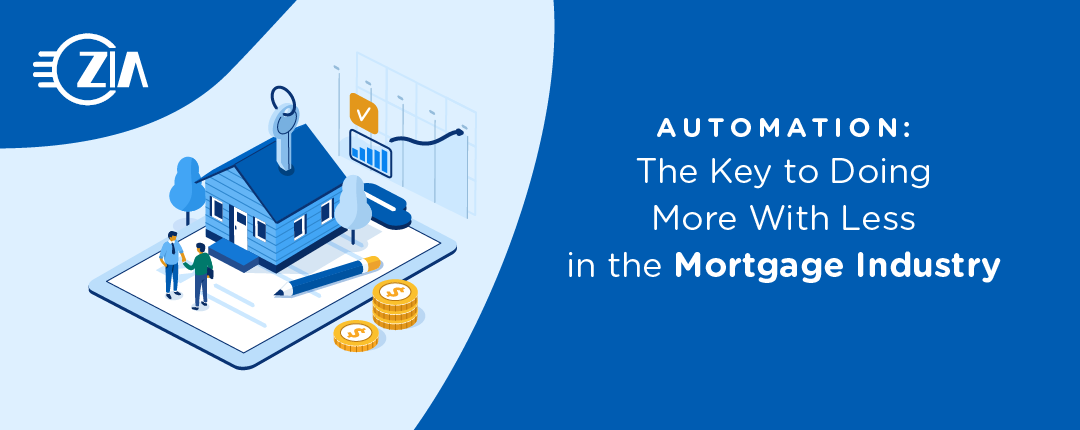It’s no secret that the mortgage industry is in a lull. Mortgage rates are around 7% and homeowners and lenders are feeling the pain. New privately‐owned home sales were down almost 20% from one year ago in January. Moreover, existing home sales are down 22.6% from a year ago, per NAR.
When this happens, lenders go into hibernation and experience large layoffs as they prepare for the markets to improve. This report shares that Rocket alone cut 29% of its workforce (~7,500 workers). United Wholesale Mortgage cut its workforce by 25% (~2,000 workers). “Do more with less” is a common refrain in times like these.
But how do companies actually do more with less? Do the workers that survived the reduction in force (RIF) double their hours? Do they work nights and weekends to cover for their unlucky colleagues? While this may often be the case, there’s a better way—automation.
The mortgage industry is ripe with areas that need automation. Movement toward digital transformation and automation requires that companies reshape the work environment and create a culture of automation that frees a loan officer to spend time with borrowers instead of paperwork. Automation promises a number of benefits:
- Increased Efficiency: Shorten the time it takes to process a mortgage loan.
- Reduced Errors: Reduce the number of costly mistakes or delays in the mortgage process.
- Improved Customer Experience: Make it easy for customers to submit applications and other documents, make changes, track the status of their loan, and communicate with loan officers..
- Improve Employee Satisfaction: Free up time spent on tedious, repetitive tasks that make work less rewarding.
- Increased Compliance: Avoid costly fines and penalties associated with non-compliance.
Regardless of these benefits, some are still intimidated by the idea of automation because they believe they have to make a huge investment. That is not always the case. You don’t have to automate everything; you just have to start. Many of our customers start with one small area that has the most manual tasks. Perhaps it’s getting data off the Uniform Residential Loan Application. Once Zia shows it’s viable, we move onto the next manual task. Overtime, automation gets better and better, core business processes are accurate and efficient, and companies see a greater return on their investment.
Better automation improves the loan application, underwriting, and closing process, while also ensuring overall security and compliance.
- Automating the loan application process: Collect and verify borrower information, calculate loan terms, and generate pre-approval letters.
- Automating the underwriting process: Analyze borrower credit reports and tax returns, and calculate debt-to-income ratios.
- Automating the closing process: Generate closing documents, collect signatures, and disburse funds.
- Automating security and compliance: Protect sensitive information, comply with regulatory requirements, reduce the risk of data breaches, and improve overall operational efficiency.
We recognize that lenders aren’t investing heavily right now. But we also know that now is the ideal time to make incremental improvements. Take advantage of the lull and prepare for when the market improves. Much like buying low and selling high in the stock market, you can build when the market is low and benefit when the market returns to normal.
Zia Consulting can help you put systems in place to automate the collection, classification, and extraction of borrower documents. With this in place, you will be ready for the increase in loan applications when the volume increases. The Zia mortgage automation toolbox is well stocked with existing solutions like Ephesoft Mortgage Powered by Zia, as well as RPA, BPM, and ECM software partnerships. Let us help your company make work better, faster, and more efficient so you really can do more with less.

ABOUT THE AUTHOR
Jon Solove, Enterprise Sales Director
Jon has over a decade of software experience, with 10+ years in enterprise content management and capture. He began his life at Zia as an ECM consultant, implementing Alfresco and Ephesoft, performing assessments, and training clients to use their implemented solutions. Jon then transitioned to a solutions engineer, leveraging his implementation experience to create elegant solutions and thorough demonstrations for current and potential clients. When he’s not helping to sell ECM solutions, he enjoys playing outside in Colorado, cooking, and being a dad.

